Akitsa
2018-10-08
by Niklas Göransson
Harsh sounds from the frozen tundra – Akitsa is a Québecois black metal duo dedicated to upholding true underground spirit. Founder and frontman O. T. discusses their new album, “Credo”.
This article can also be found in Bardo Archivology Vol. 1, a printed anthology with selected features from the online archive. Additional content includes IRKALLIAN ORACLE, AOSOTH, NIFELHEIM, UNPURE, MORBID, ABIGOR, NUMINOUS, CLANDESTINE BLAZE, RIDE FOR REVENGE, MALIGN, NORDVIS, ARMAGEDDA, EHLDER, and DEATHSPELL OMEGA – all presented in ambitious aesthetics with plenty of custom artwork. More information here.
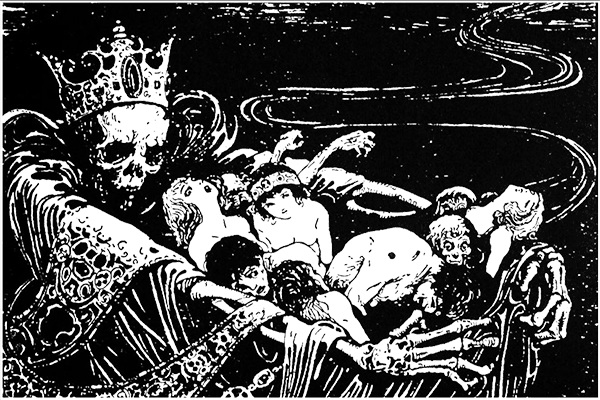
– I discovered heavy metal as a young teenager in the early 90s, before the internet revolution, and was intrigued by its brutal, violent, and sinister sides. I started digging deep, looking to find the most extreme bands out there. I’d go to the local mall where there were a few record stores and try to get hold of the most obscure and morbid cassettes available. Unfortunately, most metal labels lacked proper distribution in Canada and many releases were very hard to come by. There was a record shop near where I lived that were giving away a metal magazine, M.E.A.T., which featured reviews of and advertisements for more obscure releases by bands such as CANNIBAL CORPSE, CEMETERY, and even Québec cult death metal band NECROTIC MUTATION. Bear in mind that I prior to that listened mostly to commercial bands like METALLICA, BLACK SABBATH, MEGADETH, and so on.
Around 1994, O. T. found his way to what he describes as the absolute best metal store in Montréal: Rock en Stock. This revelation cast open the gates to the true metal underground and granted full immersion – an obsessive hunger unquenched to this day.
– After acquiring many underground death metal classics, I became very intrigued by the cover art on some black metal releases. Rock en Stock also provided free publications, one of them being a French ‘zine named Metalian – they’re still going to this day – that interviewed black metal bands and featured ads of cult European labels such as Osmose Productions or the very early Napalm Records. I started wondering if there were any local bands performing black metal and was sort of shocked to find there were barely any at all. The first black metal from Montréal I discovered was TENEBRAE‘s self-released 1994 demo, “Serenades of the Damned”. Aside from them, the entire province of Québec was a desert in terms of black metal.
The young O. T. was far from impressed with the state of his local scene. From his point of view, most of those involved lacked true underground devotion and were primarily looking to have a good time at shows and parties.
– Montréal had a very lame metal scene filled with people who’d much rather support beer companies and drug dealers than any form of underground. On my side, I was still a young teenager who’d spend all his money ordering demos and tape-trading. In 1995, I ventured into industrial and ambient music with acts like EQUIMANTHORN and MZ.412, which opened up a whole new sphere of extreme music to explore. One of the very odd and striking discoveries happened later that year when I got hold of a double-CD promo sampler from Relapse Records, “UHF/VHS”. The first disc contained the usual Relapse and Nuclear Blast America bands such as DISEMBOWELMENT, MORTICIAN, DISSECTION, BENEDICTION, ENEMY SOIL, etcetera.
The second CD, on the other hand, contained a selection from Relapse’s sub-label Release Entertainment and featured the likes of MSBR, SMELL & QUIM, Masonna and ATRAX MORGUE. And that’s how O. T. discovered noise music.
– Most metalheads were very close-minded and would stick exclusively to metal. Furthermore, they’d only be into one single genre of metal; death metallers would never listen to black metal and vice versa. I believe it was the combination of being surrounded by narrow-minded people and feeling that the underground community wasn’t devoted enough that led to my frustration about the state of affairs. Then, in the late 90s, when I first got internet at home, I began provoking users on a metal forum focused on the local scene. I criticised people’s actions and spread what I thought were the pressing matters within Montréal’s pseudo-underground. I’d viciously critique some of the bands and important figures. My provocations got more attention than initially expected, enough for them to start investigating who was behind all of these posts. That’s how I, after having internet at home for only a few weeks, discovered what an IP address was. I got targeted by many local metallers as the black sheep of the scene and was even harassed by a few of them.
Did this ever manifest in any real-world altercations?
– There were no physical interactions with metalheads, I was only insulted and the garbage cans in front of my house were kicked a few times – that’s about it. Generally speaking, the Montréal scene is very peaceful and non-violent. At that point I decided to distance myself from the local cesspit and focus on my own activities, which were still mostly by snail-mail at the time. While it was AKITSA that would come to change things shortly afterwards, in the mid to late 90s I focused mainly on the noise underground network.
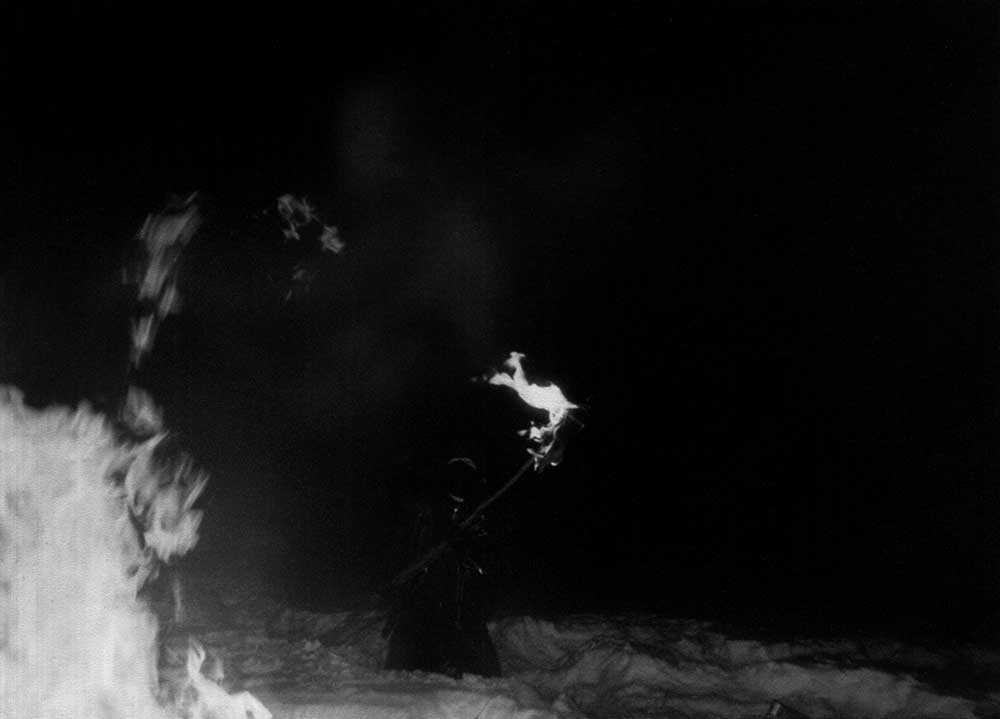
It’s interesting that O. T. was involved in both black metal and noise music – a rather unusual combination – during the 90s already. Three prolific previous interviewees of a similar ilk who spring to mind would be fellow label owners and self-recording multi-instrumentalists Harald Mentor of RIDE FOR REVENGE, Mikko Aspa of CLANDESTINE BLAZE, and M of MGŁA.
– I’m not aware of anyone from Québec who was heavily active in both black metal and industrial music during the 90s. I actually met Mikko around 2003 when he did a few GRUNT performances in the Unites States. I attended the shows in Providence and Boston and have very fond memories of them. Meeting him was great as I believe us to have a lot in common regarding the way we view these matters. I have the highest respect for Mikko‘s work and his involvement in underground art, as should everyone.
During the course of my research, I came across quite a few harsh judgements from O. T. concerning contemporary black metal. Then I read that he essentially abandoned the noise scene for much the same reason – meaning a lack of dedication and devotion. I wouldn’t be shocked if some found this indicative of him having an unhealthy obsession with these things, taking them far too seriously and thus coming off as an intolerant elitist.
– These are two entirely separate matters; the lack of seriousness in the noise scene was tactical but is purely ideological when it comes to black metal. I’ll give you a clear example of what it’s like in the former – let’s say you’re sending a label the master tape. Obviously, it will never be seen again and instead lost forever. Similar things happened a few times which, needless to say, was extremely frustrating. As for the black metal scene, it’s a completely different problem because most people are actually quite reliable. In my eyes, many self-proclaimed black metal bands of the past few years simply aren’t what they claim to be. The internet combined with the genre being widely known everywhere has resulted in a lot of newcomers with little to no ‘underground knowledge’. Today you’ll find a lot of newer bands and fans who simply don’t understand the fundamental criteria of the black metal spectrum, which could explain why today’s ‘scene’ is so full of immense misconceptions.
This leads us to AKITSA’s own scene contributions – the most recent offering being “Credo”, released by Profound Lore Records and Hospital Productions in October 2018. “Credo” is a nasty slab of audible antagonism, recorded in part with O. T.’s trusty old four-tracker but also at long-time collaborator Eric Syre‘s setup. Most of the equipment involved has been in use since the recording of AKITSA’s 2001 debut album, “Goétie”.
– As is often the case, when I first started developing ideas for the forthcoming AKITSA recording they were completely different from what ended up the final result. Once “Grands tyrans” (2015) had been released, I soon started thinking about creating new material. Initially, I thought it would be great to compose long, ambient and dark compositions inspired by electronic music; songs that would be lengthy, mysterious, and hypnotic. However, while recording the few riffs I had, things went in a totally different direction – same thing that usually tends to happen. It seems the artistic process always involves some sort of creative bulldozer that pulverises all my original ideas and grinds them into the true soundscape of AKITSA. This appears to be naturally occurring and is presumably what generates that filthy, monotonous, and harsh sound.
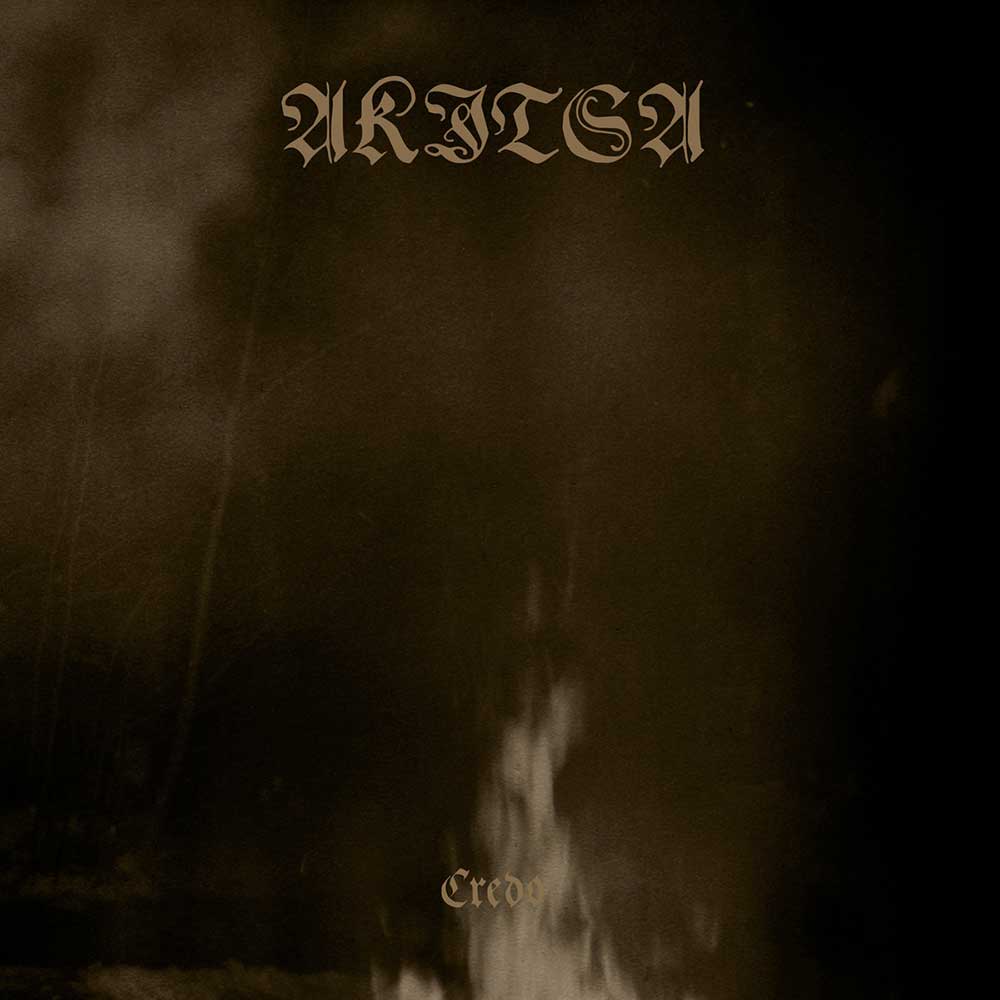
O. T. points out how “Credo” is a clear breaking-point in AKITSA‘s history – the album being vastly different from everything they’ve done in the past, aesthetically as well as sonically.
– Mixing and mastering duties were handled by Arthur Rizk, a long-time supporter of the band as well as talented studio engineer. He managed to extract certain details from the production, making the whole recording sound more powerful without losing the original AKITSA spirit. It’s also important to mention that this is the first time the CD cover-formula has changed; we’re not using the traditional centred black-and-white image with the logo above and album title below. Instead, we opted for an analogue picture of a bonfire, taken the same night as my album photo session. The cover evokes a mystical feeling and, through the billowing cloud of smoke, also represents the harsh coldness of Québec. These images were captured out in the Laurentian Mountains during the very last night of 2017, when the temperature was one of the coldest we’ve had in years. I shot the picture of the fire, while the photo of me was taken by a comrade from PÂLEMORT. The whole concept of the layout was handled by myself along with my long-time partner, Dominick Fernow of Hospital Productions.
What about conceptual approach?
– The lyrics follow the same path upon which we’ve been walking for over a decade now. They are sinister and misanthropic poems conveying the most cruel and apocalyptic visions about our own lives and surroundings. I wrote two of the lyrics, “Espoir vassal” and “Vestiges fortifies”, and AKITSA co-founder Néant penned two others – “Le monde et ma bile” and “Credo”. “Voies cataclysmiques” was written by an old friend of mine, Valnoir of Parisian graphics design studio Metastazis, and “Siècle pastoral” is an excerpt from an 18th century poem by Jean-Baptiste-Louis Gresset. The latter was used because of its beauty – one line that particularly opened my eyes was, ‘La mort qui pour nous a des ailes’, which basically translates to, ‘Death, which for us has wings’. Overall, I believe “Credo” to be the most consistent and well-crafted album since the birth of AKITSA.
The music is, as per usual, greatly varied; from asphalt violence-scented Oi! and hardcore riffs to distorted soundscapes draped in soothing melancholia. The BURZUM-styled ambience is tastefully dispersed and the extremity of O. T.’s shrieking prevents the rockier riffing from becoming catchy. Having familiarised myself with the new album, I decided to reacquaint myself with AKITSA’s earlier material and so sought out their Spotify profile to play from the top-list. After five or so songs I realised how each of the most popular tracks were so different that they might as well be works from separate bands, with massive variations in music style and mood, vocals, and even production within the same album.
– When the time comes to create new AKITSA material, nothing is decided beforehand, everything has always been done from sporadic outbursts of inspiration. All recordings are very instinctive, which might explain the amalgamation of radically different styles. I’m a somewhat versatile vocalist and usually sing over the music much in the same way as it was recorded – intuitively. I believe AKITSA still has a strong personality and is easily recognised despite its multiple facets; it’s what makes the band what it is.
Three years is an unusually long hiatus for you?
– I honestly have no idea what caused the three-year gap between “Grands tyrans” and “Credo”. I prefer creating when inspiration flows naturally and will never force myself to do anything; I must be in the proper state of mind. Perhaps that could explain the hiatus. I started working on new material shortly after the previous album came out but have since kept busy with many different things, such as Tour de Garde and an industrial noise project called ÂMES SANGLANTES.
Earlier this year O. T. underwent a five-date European tour with the project in question, which I read was a resurrected venture from the 90s.
– There was no resurrection. Even though ÂMES SANGLANTES has been somewhat dormant over the years, it was never dead. The project started back in 1996 and has remained active ever since. The European tour was amazing. Two of the dates were alongside OLD TOWER, including the Maxxi Museum performance in Rome where Prurient joined us for a collaborative set. This performance was part of Nico Vascellari‘s Revenge exposition and was definitely a unique experience. Copenhagen was also very interesting as I shared the stage with members of Tour de Garde’s roster from the Korpsånd circle. Also performing was a very young Danish band named SKINLIV, featuring members who are about fifteen or sixteen years old; they delivered great, hateful music despite their young age. Overall, the tour was a great success and I hope to repeat this experience in the future.
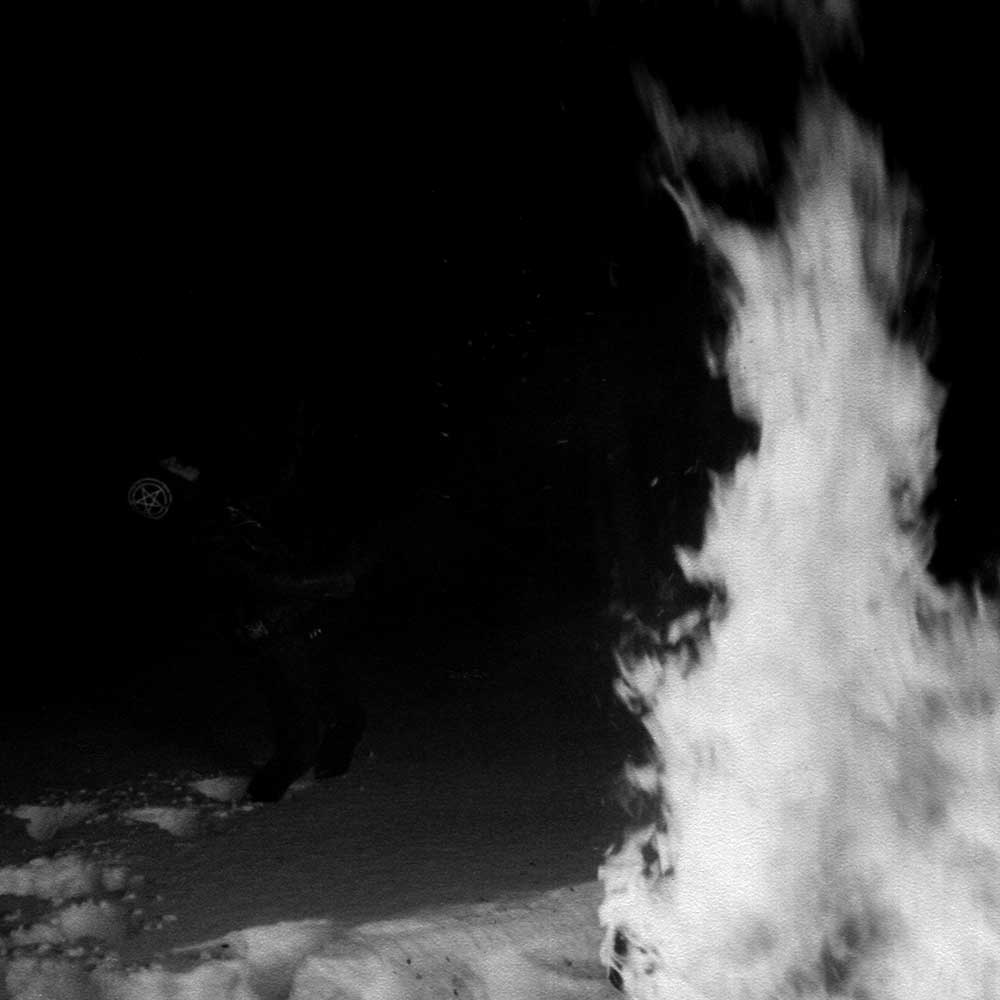
The aforementioned Tour de Garde is an underground label operated by O. T. since 2001.
– Tour de Garde was created to pursue the 90s black metal underground spirit with my own vision of how it should be. Black metal was always surrounded by other genres since the very beginning, even the most influential acts such as MAYHEM and BURZUM have ties to electronic music, traditional heavy metal, or thrash metal. While Tour de Garde’s focus is on black metal, I still love venturing into other territories when coming across projects that suit the label despite being from different genres. I’m looking for bands who share my ethos. Authenticity, devotion, and honesty are very important assets, as well as a strong sense of aesthetics.
Were you ever tempted to take things to the next level and go full-time?
– No, I’ve never even considered taking it to the next level because Tour de Garde was created to remain precisely where it is now: pure underground. The label has always been a passion project and was never about financial gain – it’s most definitely a labour of love and devotion where no compromises will ever be made.
I read an interview with O. T. from a few years ago in which he lamented how everything pertaining to underground distribution is going increasingly faster. Labels are spewing out releases at ridiculous rates and customers have now come to expect Amazon-like service when placing an order from a modest amateur outfit run by an enthusiast with a full-time occupation on the side. I’m curious if there have been any recent developments.
– I’d say this statement is still accurate, not much has changed within the last three years. If anything, I’ve noticed that things may have worsened in the trendy raw black metal limited cassette niche. It’s almost as if you have to set an alarm clock to make sure not to miss out on whatever release happens to be the flavour of the month. Sadly, most of these tape runs are rather uninteresting and would never sell as fast if they were released in a decent number of copies. I myself, with Tour de Garde, try to always produce enough copies of my products to avoid such fabricated rarity. In the long run I believe the label’s ultimate goal should be promoting its releases, which is why I need mine to be in stock for more than a day.
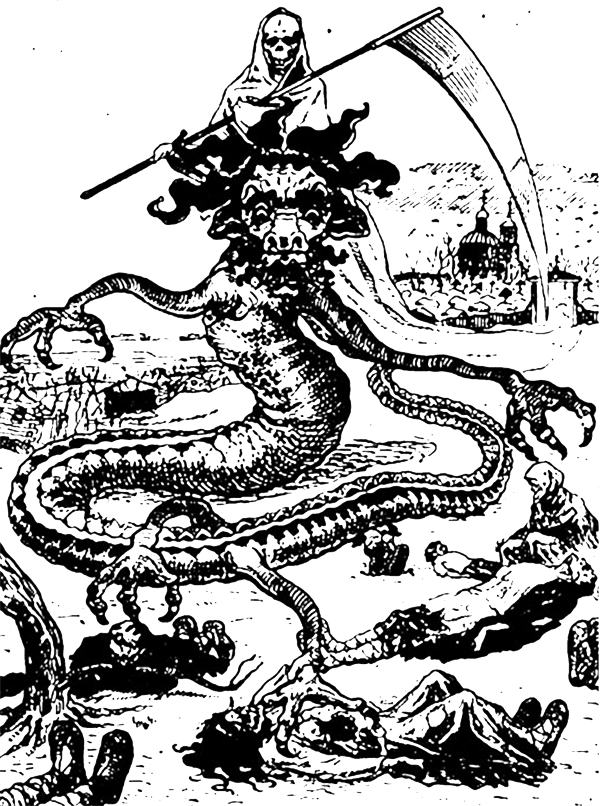
This article can also be found in Bardo Archivology Vol. 1, a printed anthology with selected features from the online archive. Additional content includes IRKALLIAN ORACLE, AOSOTH, NIFELHEIM, UNPURE, MORBID, ABIGOR, NUMINOUS, CLANDESTINE BLAZE, RIDE FOR REVENGE, MALIGN, NORDVIS, ARMAGEDDA, EHLDER, and DEATHSPELL OMEGA – all presented in ambitious aesthetics with plenty of custom artwork. More information here.



